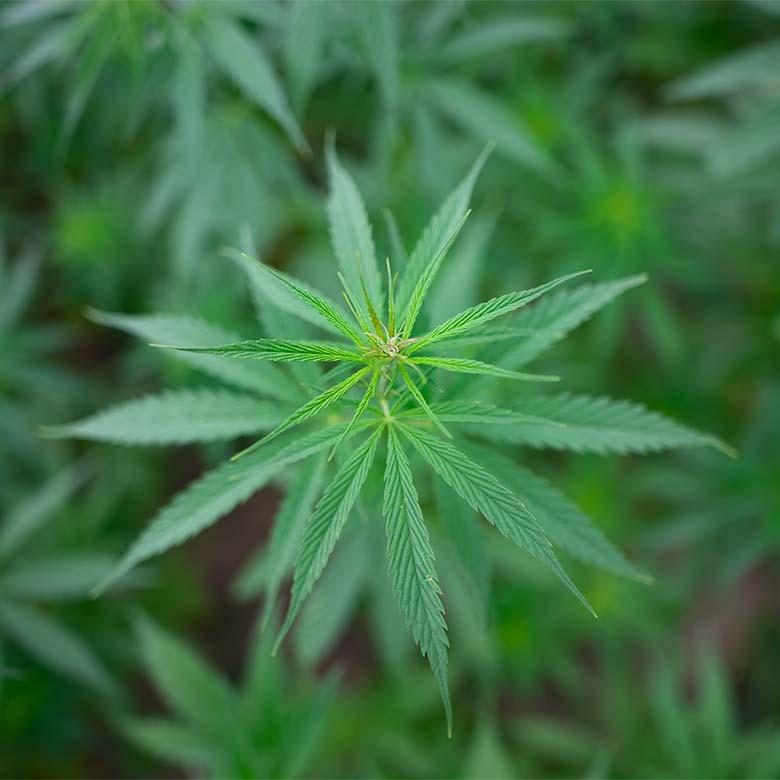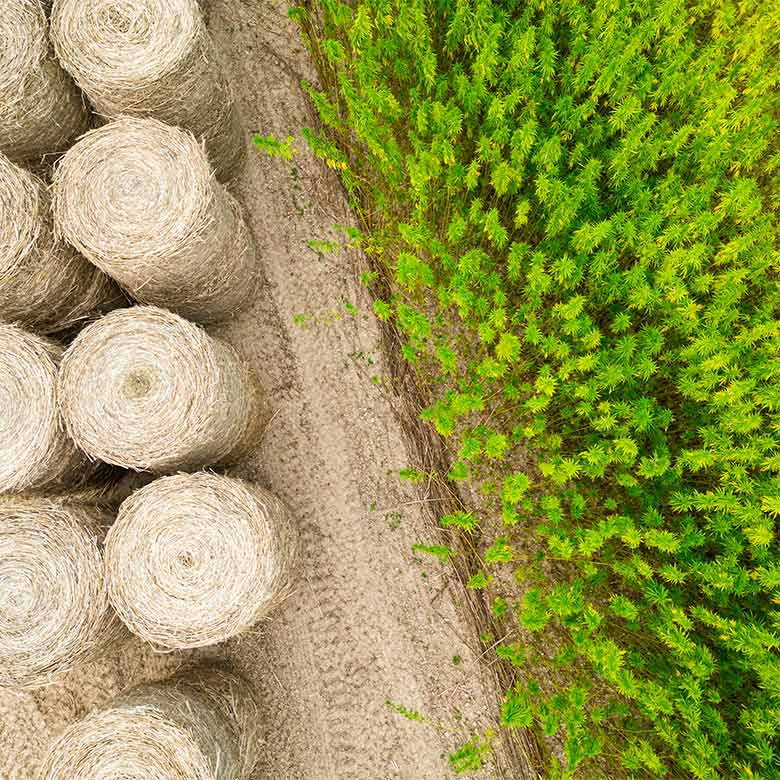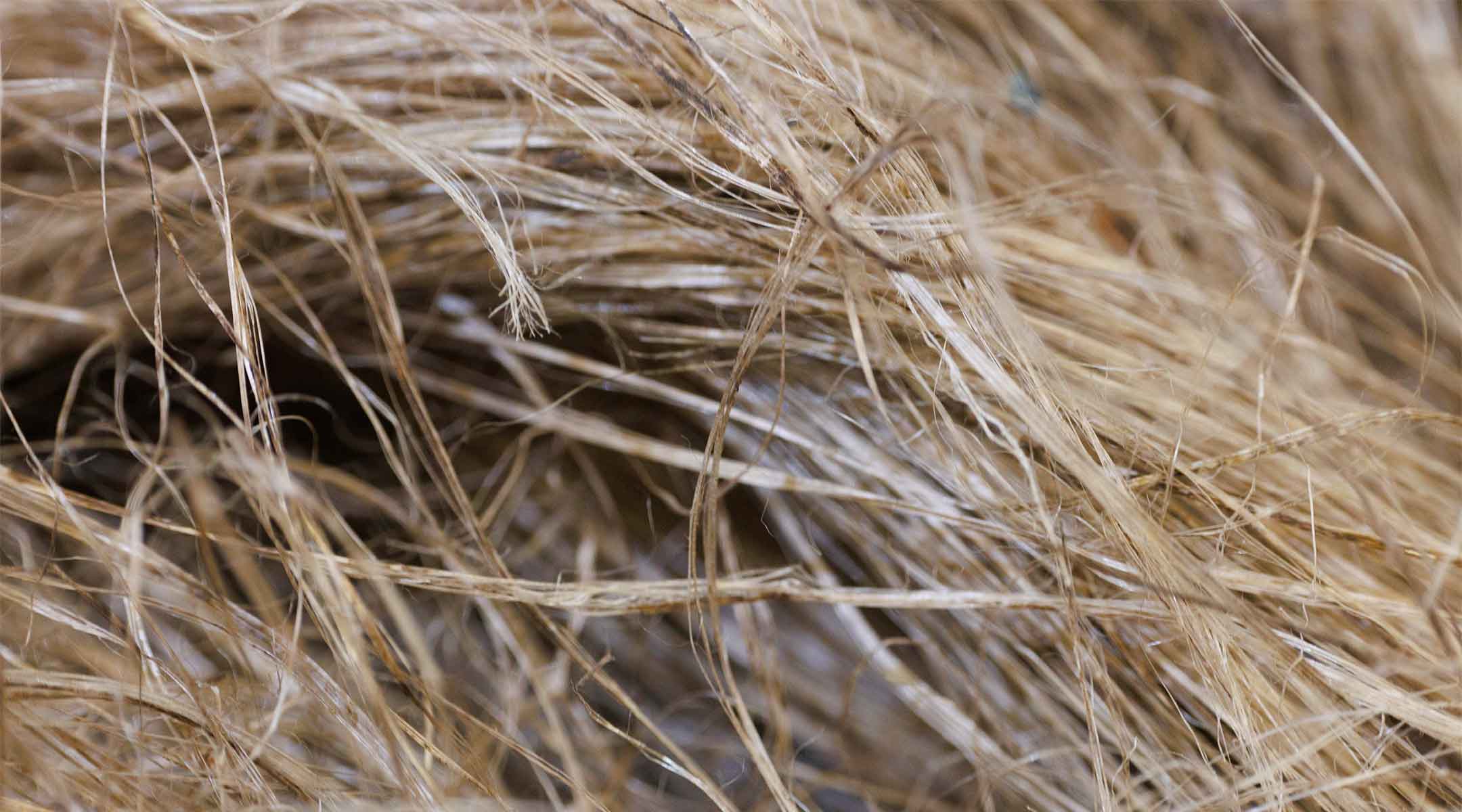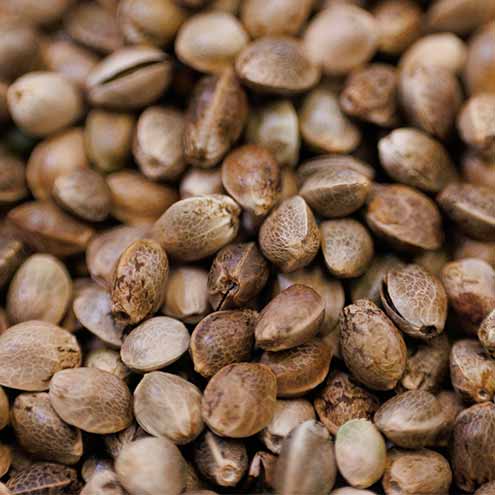
DÉCOUVRIR
LE CHANVRE
millénaire et très
actuelle
Des études archéobotaniques récentes suggèrent que le chanvre est apparu simultanément dans des foyers préhistoriques au Japon et en Europe de l’Est, il y a environ 11 500 à 10 200 ans.
Les fouilles du site néolithique de Xianrendong, situé dans le Jiangxi et daté de 8000 avant J.-C., ont révélé de la céramique, dont certains pots sont décorés de fibres spiralées de chanvre.
Au Moyen Âge, l’empereur Charlemagne encourage fortement la culture du chanvre. Cette plante était comme une garantie de prospérité, en raison des nombreuses utilisations permises par sa fibre, telles que la fabrication de vêtements, de cordages et de voiles.
Les échanges maritimes intercontinentaux sont en plein essor, et les puissances européennes se disputent la suprématie navale. Le chanvre devient alors un produit stratégique. En effet, un navire de taille moyenne embarquait entre 10 et 20 tonnes de chanvre sous forme de cordages et entre 5 et 10 tonnes sous forme de voiles, qu’il fallait renouveler régulièrement.
En 1937, le « Marijuana Tax Act » interdit la culture du chanvre aux États-Unis. S’ensuit une concurrence dans son usage textile par les fibres exotiques telles que le jute, le sisal et le kenaf, ainsi que par les fibres synthétiques comme le nylon, et dans l’industrie papetière par le bois. Le chanvre décline rapidement au cours de la première moitié du XXe siècle.
En France, 176 000 hectares sont cultivés en 1840. Un siècle plus tard, en 1939, la superficie cultivée n’est plus que de 3 400 hectares. En 1942, le gouvernement américain relance la production de fibres de chanvre et réalise même un film de propagande intitulé « Hemp for Victory ».
L’INRA et la Fédération Nationale des Producteurs de Chanvre (FNPC) lancent un programme de sélection variétale visant à développer des plants à faible teneur en
L’essor des préoccupations environnementales depuis la fin du XXe siècle tend à stimuler le développement des débouchés du chanvre dans des domaines aussi variés que le textile, l’habitat, l’alimentation et la plasturgie, etc.
En 2003, l’interprofession InterChanvre a été créée pour promouvoir les qualités exceptionnelles de cette plante. Aujourd’hui, la France est le premier producteur de chanvre en Europe, représentant plus du tiers des 60 000 hectares cultivés sur le continent, et le deuxième producteur mondial.

éco-responsable

Le chanvre est une plante à croissance rapide qui supprime efficacement les mauvaises herbes rivales. De plus, elle est rarement affectée par des ravageurs. En règle générale, aucune utilisation de produits phytosanitaires n’est nécessaire dans le champ entre la plantation et la récolte.
Grâce à son système racinaire profond, le chanvre est une culture qui résiste relativement bien à la sécheresse. Dans la très grande majorité des cas, le chanvre est cultivé sans irrigation.


La croissance rapide du chanvre a comme autre avantage de produire à chaque récolte une forte biomasse. En conséquence, le chanvre capte entre 9 et 15 t de CO2 par
environnementaux
La culture du chanvre soutient 10 Objectifs de Développement Durable de l’ONU. InterChanvre propose le contrat PSE Chanvre, rémunérant les producteurs pour leurs services environnementaux, idéal pour les entreprises engagées sur le plan écologique et sociétal.
PSE InterChanvre

utilisations
La lutte contre le dérèglement climatique exige des alternatives aux ressources fossiles, présentes dans presque tous les produits de consommation. Le chanvre est une plante sobre et vertueuse dont la production et la transformation consomme peu d'énergie. Polyvalente, elle est capable de répondre à de nombreux besoins : alimentation humaine et animale, textile, cosmétique, construction, isolation, litière, cordage, papier et matériaux composites.
Développées par les acteurs de la filière, les utilisations du chanvre sont extrêmement variées, allant des applications traditionnelles à l'élaboration de matériaux biosourcés innovants.
du chanvre

ÉCO-CONSTRUCTION


Dans le chanvre, toutes les parties sont valorisées. La graine et ses dérivés possèdent des qualités nutritionnelles exceptionnelles, qui en font un véritable aliment santé. La chènevotte, issue de la partie centrale de la tige, est une source d’innovation pour des techniques de construction plus sobres. La fibre, également extraite de la tige, permet, dans de nombreux secteurs (textile, papeterie, construction, plasturgie), d’exploiter une matière première locale et respectueuse de l’environnement. Même la poussière de chanvre, résidu des étapes de transformation, est exploitée pour produire une énergie renouvelable.
du chanvre

aux producteurs


Le chanvre est une plante rustique, robuste, qui lui permet de s’adapter aux variations environnementales. Excellente tête de rotation, sa culture nécessite peu d’entretien et contribue à améliorer la qualité du sol et à augmenter le rendement des cultures suivantes, notamment celui des céréales. Enfin, son feuillage dense favorise la biodiversité et attire les insectes auxiliaires.
la culture du chanvre
